Contribution Lesson Plan

Lesson Plan Mindmap for Contribution ” Click to Enlarge
CLICK ICONS TO JUMP DIRECTLY TO EACH SUBJECT ON THIS PAGE








CONTRIBUTION LESSON PLAN
This page is a free-shared lesson plan archive for teaching all educational subjects within the context and theme of “Contribution”. It is purposed for use in community education environments, homeschool environments, traditional schooling environments, or as a supplemental and fun addition to any education program. As part of the complete Education for Life Program, this lesson plan is specifically designed to work in conjunction with the other components: Foundations of Teaching, Curriculum, Teaching Strategies, Learning Tools and Toys, Evaluation Model, and The Ultimate Classroom. If you’d like to learn how all these components work together, click here. Click here for the specifics focused on just using the lesson plans:
CLICK HERE FOR A DETAILED TUTORIAL ON HOW TO USE THIS LESSON PLAN
NOTE: The colors are provided as a possible linear progression (red/easiest to violet/most challenging) for people that might prefer a more linear structure. Our core philosophy, however, is that through creativity every color can be made easy or challenging for any learning level.
RELATED PAGES (mouse-over for descriptions and click for complete pages)
EDUCATION OVERVIEW | HOW TO USE THIS COMPONENT | OUR OPEN SOURCE PURPOSE
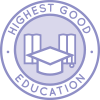
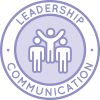
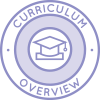
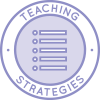
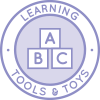
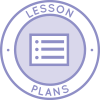
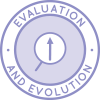
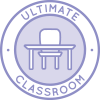
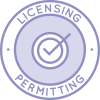

WAYS TO CONTRIBUTE TO EVOLVING THIS EDUCATION PROGRAM WITH US
SUGGESTIONS | CONSULTING | MEMBERSHIP | OTHER OPTIONS
A NOTE ABOUT ALL ONE COMMUNITY LESSON PLANS
The One Community lesson plans are intentionally designed for use in ANY educational environment and with ALL educational, cultural, religious/spiritual, and philosophical approaches to teaching and learning. They are designed without an ideological approach and specifically so they can be adapted to include the views, preferences, methodologies, and/or ideologies preferred by different parents and teachers.
For maximum flexibility and adaptation, they are also designed to be combined to teach multiple subjects at the same time. Doing this increases the creativity, effectiveness, and fun of your learning environment. Once we are on the property and operating our version of the complete school and Education for Life program, we will be adding video examples of how to combine the lessons. In the meantime, visit the Teaching Strategies page for a list of suggestions.
ARTS AND TRADES
CLICK HERE FOR THE COMPLETE SUBJECT OUTLINE FOR ARTS & TRADES
 | TEACHING ARTS AND TRADES WITHIN THE CONTEXT OF CONTRIBUTION |

| The Arts- Create a new rhythm* that contributes a fun element to an existing clap-along song, like Bingo, and teach it to 2 other people.
- Contribute your voice to a choir and sing* in harmony for a group of elderly people.
- Take photographs* of people contributing to the betterment of something. Make a collage* of your favorite pictures and share it with the people you photographed.
- Create a performance piece* that demonstrates how an individual can contribute to the highest good for all. Perform the piece for your peers.
- Make a short documentary film* about contribution within your community. Screen it for the members of your community. Have a group discussion* about the film after the screening.
- Create a mosaic* that can be installed somewhere in your community as a contribution to the aesthetics of that location. Have passers-by fill in a response card that defines how the mosaic made them feel. After a year tally the response cards and conclude* whether or not the piece contributed to a positive feeling.
- Contribute your expertise in the art of your choice from the violet portion of the molecule to a museum or showcase. Make obvious improvements and then share* the changes with others. Document your process and write and open source a reflection paper* on the experience.
|

| Trades- Think about the basics of communication and talk* to an mentor about different ways of communicating to contribute to a highest good community.
- Contribute your time to the community by preparing and planting seeds* in a community garden.
- Choose 3 trades from the yellow portion of the molecule. Investigate how these trades contribute to the community. Write a 2 to 5 page paper* about your results.
- Explore your environment and find at least 10 examples how construction workers contribute to the community. Write a 5 to 10 page paper* about your findings.
- Research 5 trades from the blue portion of the molecule and create a brochure* for each field highlighting the contributions people in that trade make to the global community and or local community.
- Choose a trade from the indigo portion of the molecule and publish an article* on different ways individuals in that trade contribute to their community. Open source your article.
- Create a workshop* for professionals to gain an understanding on how they personally can contribute more to the highest good of their community through their work. Ask the participants to apply the knowledge they gain from the workshop and for them to track any influences that they notice occur. After a year send them a questionnaire about the contributions. Summarize the results of the questionnaire in a blog article* you write.
|
| CLICK HERE TO EMAIL US IF YOU HAVE AN IDEA TO ADD TO THIS SECTION |
* Please note that anything with an asterisk is just a suggestion. The diversity of options with asterisks are interchangeable and purposed to stimulate your own ideas. Any one of these suggestions could be replaced with a written paper, any form of art project (drawing, painting, music, paper mache, clay, wood, knitting/embroidery, metals, etc. etc.), an experiment, a presentation, a mindmap, a computer program, a web design project, a piece of poetry or a song, an interpretive dance or play, a group project, or anything else. What we feel is most important is that both the Learner and the Teacher agree on an exercise/activity they both feel would be maximally engaging, fun, and effective. If you come up with an idea we haven’t already thought of, please share it with us.
ENGLISH
CLICK HERE FOR THE COMPLETE SUBJECT OUTLINE FOR ENGLISH
Note: Any language can be substituted for English. The subject is listed here as “English” because that is the primary language of most of the people on the team, and the official language of the country we’re building our initial location in.
 | TEACHING ENGLISH WITHIN THE CONTEXT OF CONTRIBUTION |

| - Have someone read to you a book that is a story with a theme about contribution. After the reading, discuss* the book with the reader.
- Choose 5+ words that you think represent a definition of the word contribution. Create a poster* of these words with the word contribution.
- Do a linguistics study on the word contribution. Does it have different definitions in different cultures? What does it mean in your culture? Write a 3 to 5 page report* on your findings.
- Read a novel* that has a theme of contribution. Write a book report* about how contribution is presented and anything you learned from reading this book.
- Compare and contrast the way different media genres present the value of contribution by publishing an essay* on the topic, and free share it on the web.
- Write a thesis* about the importance of contribution for community. Implement your idea in your community and write a conclusion section based on your communities experience. Open source your thesis paper.
- Write a literary work* in the genre you’ve chosen, with contribution as the theme. Free share your work.
|
| CLICK HERE TO EMAIL US IF YOU HAVE AN IDEA TO ADD TO THIS SECTION |
* Please note that anything with an asterisk is just a suggestion. The diversity of options with asterisks are interchangeable and purposed to stimulate your own ideas. Any one of these suggestions could be replaced with a written paper, any form of art project (drawing, painting, music, paper mache, clay, wood, knitting/embroidery, metals, etc. etc.), an experiment, a presentation, a mindmap, a computer program, a web design project, a piece of poetry or a song, an interpretive dance or play, a group project, or anything else. What we feel is most important is that both the Learner and the Teacher agree on an exercise/activity they both feel would be maximally engaging, fun, and effective. If you come up with an idea we haven’t already thought of, please share it with us.
HEALTH
CLICK HERE FOR THE COMPLETE SUBJECT OUTLINE FOR HEALTH
 | TEACHING HEALTH WITHIN THE CONTEXT OF CONTRIBUTION |

| - Make a picture* that shows how good nutrition habits contribute to a healthy/happy life.
- Identify and demonstrate* 4 common items in your house that you can use to contribute to improving and maintaining a high fitness level.
- Experiment with your life schedule of work and play. Find what schedule is a good balance to contribute to your emotional well being. Keep a journal* as you go through this process.
- Choose an activity from the physical section in the green portion of the molecule. Participate in this activity for 3 sessions and pay attention to how it contributes to your physical healthiness. Write a description* of this activity and any results you achieved for your community newsletter.
- Write an article* on the contributions to a community from the sports listed in the physical section of the blue portion of the molecule. Free share your article.
- Write and publish a recipe book* with a focus on nutritious foods that contribute to a healthy mind. Open source your book.
- Contribute a blueprint* for living in harmony with others and the environment. Make it simple enough for young children to follow. Do a test run with at least fifteen 4 to 6 year olds. Record your observations and results. Make any necessary changes to the blueprint then open source it.
|
| CLICK HERE TO EMAIL US IF YOU HAVE AN IDEA TO ADD TO THIS SECTION |
* Please note that anything with an asterisk is just a suggestion. The diversity of options with asterisks are interchangeable and purposed to stimulate your own ideas. Any one of these suggestions could be replaced with a written paper, any form of art project (drawing, painting, music, paper mache, clay, wood, knitting/embroidery, metals, etc. etc.), an experiment, a presentation, a mindmap, a computer program, a web design project, a piece of poetry or a song, an interpretive dance or play, a group project, or anything else. What we feel is most important is that both the Learner and the Teacher agree on an exercise/activity they both feel would be maximally engaging, fun, and effective. If you come up with an idea we haven’t already thought of, please share it with us.
MATH
CLICK HERE FOR THE COMPLETE SUBJECT OUTLINE FOR MATH
 | TEACHING MATH WITHIN THE CONTEXT OF CONTRIBUTION |

| - Gather together a collection of objects and contribute objects from one group to another group to demonstrate and explain each of the basic functions of multiplication, division, addition, and subtraction. Discuss* how each of these changes relates to contribution.
- Explore the concepts of fractions and measurements through the context of cooking. Imagine exploring the effects of contributing too much or too little of each ingredient buy describing it on paper and drawing pictures* of it. Talk about the results.
- Write an in depth description* revolving around contribution to describe borrowing and carrying digits in large number multiplication & division. Include at least 20 examples and math tricks and how each of these uses your contribution examples.
- Write out* 30 examples of and explanations for equivalent expressions and proportional relationships in the context of explaining and demonstrating contribution.
- Rank* the blue level concepts in the order that you feel would contribute most to least to your life. Give a speech* on 1-5 examples for each of how it contributes.
- Write a lesson plan* for an appropriate color level, using all the concepts of that level, where all the concepts relate to teaching contribution.
- Pick the ten math concepts you feel you need the most development in. Write and open source a chapter for a book* on each concept using word problems and mathematical examples that teach the concept of contribution.
|
| CLICK HERE TO EMAIL US IF YOU HAVE AN IDEA TO ADD TO THIS SECTION |
* Please note that anything with an asterisk is just a suggestion. The diversity of options with asterisks are interchangeable and purposed to stimulate your own ideas. Any one of these suggestions could be replaced with a written paper, any form of art project (drawing, painting, music, paper mache, clay, wood, knitting/embroidery, metals, etc. etc.), an experiment, a presentation, a mindmap, a computer program, a web design project, a piece of poetry or a song, an interpretive dance or play, a group project, or anything else. What we feel is most important is that both the Learner and the Teacher agree on an exercise/activity they both feel would be maximally engaging, fun, and effective. If you come up with an idea we haven’t already thought of, please share it with us.
SCIENCE
CLICK HERE FOR THE COMPLETE SUBJECT OUTLINE FOR SCIENCE
 | TEACHING SCIENCE WITHIN THE CONTEXT OF CONTRIBUTION |

| Life Sciences- Explore your neighborhood with an expert and identify and discuss* the plants you see there, and how they contribute to humans and the environment.
- Read a reference book about extinction and change over time, and write a book report * focused on any contributions to life ,as we know it now, that happened from these changes.
- Conduct hypothetical tests* on food chains and write an investigative report* on how each link in the chain contributes to another link. In the report elaborate on the contributions of the link and any effects on the chain if a link was not there. Discuss your findings with an expert.
- Design an experiment* that will demonstrate if a correlation exists between DNA and genetics and their contribution to a person’s individuality.
- Research cell biology’s contributions to medicine. Make a list* of ways knowledge of this field affects humankind and contributes to good health and wellbeing. Open source your findings in an article* online.
- Compare at least 6 of the fields listed in the indigo section of the life science molecule. Write an investigative report* on how these areas contribute to science. Give examples of individuals, ideas and products that all give positive effects to society and contribute to the greater good. Free share your report on the web.
- Create a hypothesis about the contribution of knowledge in the field of ecology to the planet. Design and implement an experiment* to demonstrate the validity of your hypothesis. Open source the results of your experiment.
|

| Physical Sciences- Talk about helpfulness as an aspect of contribution and then make a chalk drawing*of how you can use each of 4 simple machines to contribute to helping someone else do something.
- Describe the process of how electricity can be used to create an electromagnet and write up* 10 ways in which people have used electromagnets to contribute to improving something for others.
- Choose 6 yellow level physical science elements and put them in pairs that would work together, and write up an idea for an experiment* for each pair where you can use the pair working together to contribute to society and/or the education process necessary to understand how they work to benefit one another.
- Create a demonstration model* for explaining and showing how individual molecules contribute together to make chemical reactions and changes in states of matter. Share your demonstration with others and have a discussion* on how it contributed to their understanding of the topics.
- Research and write a 5 page paper* about how the science of calculating force contributes to the science of conservation of energy, and how these together contributed to shaping/changing our understanding of the world around us, and share your paper in a way that contributes to other people’s understanding of the topics.
- Write a 7+ page paper about how nuclear energy has positively and/or negatively contributed to the world thus far and include your own ten step solution set* that you open source and free share as your way to make a positive contribution on this issue.
- Choose a violet level physical science concept and theorize or hypothesize a new contribution that could help the expansion of the scientific concept or create a new paradigm. Write a 10 page evaluation* on your vision and how it could contribute to global change or views in the scientific community. Be sure to include the established science in that field to support your concepts.
|

| Earth Sciences- Make a picture* representing the seasons and how the different times of year contribute to your communities wellbeing. e.g. fall is usually a time of harvest.
- Create a mobile* that represents that the sun is a star and the earth is in the solar system. Discuss your mobile with 3 others focusing on if and how the sun and earth contribute to each other.
- Investigate transportation of materials and waste disposal. Design a graph* that represents your findings on any contributions and any negatives that the different modalities of transportation and disposal make to the planet.
- Collect and display data* on the cumulative effects of geologic processes and create a hypothesis on the contribution this information could have to the earth now and in the future.
- Write a 5 page research paper* on fusion. Include all the areas fusion has contributed to developments within the earth science world. Choose 5 contributions that interest you and write at least 1 page on each of these. Free share your paper with experts in the field and have a discussion with them regarding their opinions on fusion contributions.*
- Create an experiment* that demonstrates the contribution of volcanoes to the ecosystem. Lead this experiment with interested students and together write a results paper*. Open source the experiment and the results.
- Research, then write and give a presentation* on the contributions of scientists in the field of physical geography, to students interested in this field. After the presentation lead a discussion about how these students of physical geography can contribute to the science world.
|
| CLICK HERE TO EMAIL US IF YOU HAVE AN IDEA TO ADD TO THIS SECTION |
* Please note that anything with an asterisk is just a suggestion. The diversity of options with asterisks are interchangeable and purposed to stimulate your own ideas. Any one of these suggestions could be replaced with a written paper, any form of art project (drawing, painting, music, paper mache, clay, wood, knitting/embroidery, metals, etc. etc.), an experiment, a presentation, a mindmap, a computer program, a web design project, a piece of poetry or a song, an interpretive dance or play, a group project, or anything else. What we feel is most important is that both the Learner and the Teacher agree on an exercise/activity they both feel would be maximally engaging, fun, and effective. If you come up with an idea we haven’t already thought of, please share it with us.
SOCIAL SCIENCES
CLICK HERE FOR THE COMPLETE SUBJECT OUTLINE FOR SOCIAL SCIENCES
 | TEACHING SOCIAL SCIENCES WITHIN THE CONTEXT OF CONTRIBUTION |

| - Make a building project* with 3 friends. Pay attention to the process and then tell each other one thing you observed that each person contributed to the process.
- Read a book* about the history of your country and discuss with a grown up* the contributions the people who started your country made that affect your life now.
- Draw a family map* reflecting contributions each member of your family makes to the running of your family unit.
- Do a 3 to 5 page report* on the culture of ancient Egypt. Include a section on how that society viewed contribution.
- Choose 3 to 5 areas in the blue level and write an investigative paper* on if and how contribution is a relevant aspect of this subject.
- Make a presentation* on fairness and honor as they relate to contribution. Discuss the differences between giving, helping and contributing. Video and open source your presentation.
- Write a textbook entry or chapter* on the global perspectives and history of contribution. Include a section on your personal perspective and experiences. Teach a blue level course on this and include in your curriculum opportunity for your students to give their personal perspective and experience with contribution.
|

| Foreign Languages
(Each of the following is to be completed in the foreign language(s) being studied)- Learn* words for different contribution related concepts.
- Read & write* with words for contribution related concepts.
- Read and discuss* ‘contribution’ in fiction.
- Explore & create 3 different types of short literature* in relation to contribution.
- Compose a new piece of literature* about contribution.
- Research and summarize* the complete history of and writings about contribution words.
- Write a dissertation level paper* on the concept of contribution.
|
| CLICK HERE TO EMAIL US IF YOU HAVE AN IDEA TO ADD TO THIS SECTION |
* Please note that anything with an asterisk is just a suggestion. The diversity of options with asterisks are interchangeable and purposed to stimulate your own ideas. Any one of these suggestions could be replaced with a written paper, any form of art project (drawing, painting, music, paper mache, clay, wood, knitting/embroidery, metals, etc. etc.), an experiment, a presentation, a mindmap, a computer program, a web design project, a piece of poetry or a song, an interpretive dance or play, a group project, or anything else. What we feel is most important is that both the Learner and the Teacher agree on an exercise/activity they both feel would be maximally engaging, fun, and effective. If you come up with an idea we haven’t already thought of, please share it with us.
TECHNOLOGY AND INNOVATION
CLICK HERE FOR THE COMPLETE SUBJECT OUTLINE FOR TECHNOLOGY AND INNOVATION
 | TEACHING TECHNOLOGY & INNOVATION WITHIN THE CONTEXT OF CONTRIBUTION |

| Technology- Find and use an app* that contributes to your development as a compassionate person.
- Make a collage * showing examples of how simple machines in daily living contribute to a better life for you.
- Contribute* new ideas to a social media group. Poll participants in the group about their experience of your new ideas.
- Create a website* that tracks financial contributions for a non-profit group.
- Study computer hardware systems and find a way to contribute* to the continuing development in this field. Free share your ideas on the internet.
- Choose a group of people in a system from the indigo level and write an in depth 5 page report* on their contributions to society and the planet. Open source your report.
- Develop software* that monitors contributions and helps track donors,gifts,type of contribution made and tallies what is still needed as contributions come in to the group.
|

| Innovation- Draw a picture* that shows your awareness of what it means to contribute your time and or energy to something other than yourself.
- Practice visualization* of achieving a goal for a week. After the week, work towards your goal. Talk to a mentor about how visualization contributed to you achieving the goal.
- Study NLP. Apply what you learn and then write a report* about if and how the practice contributed to your quality of life.
- Partake in 3 to 5 methods of relaxation and mindfulness. Keep a journal* reflecting any contributions to your well being you discover from each practice.
- Choose 5 systems from the blue level and draw an in depth chart*, with accompanying explanations, showing ways those systems contribute to society. Open source your final product.*
- Create a survey* that measures the contribution of entertainers to the highest good of all. Tally the results and write a recommendations paper* on ways the entertainment industry could improve.
- Create a manual* for philanthropic organizations that describes ways to collect contributions and how to keep the contributors separate from running the organization. Give the manual to several existing groups and have them give you feedback on how well the manual works. After use, revise the manual using their recommendations and open source the final manual.
|
| CLICK HERE TO EMAIL US IF YOU HAVE AN IDEA TO ADD TO THIS SECTION |
* Please note that anything with an asterisk is just a suggestion. The diversity of options with asterisks are interchangeable and purposed to stimulate your own ideas. Any one of these suggestions could be replaced with a written paper, any form of art project (drawing, painting, music, paper mache, clay, wood, knitting/embroidery, metals, etc. etc.), an experiment, a presentation, a mindmap, a computer program, a web design project, a piece of poetry or a song, an interpretive dance or play, a group project, or anything else. What we feel is most important is that both the Learner and the Teacher agree on an exercise/activity they both feel would be maximally engaging, fun, and effective. If you come up with an idea we haven’t already thought of, please share it with us.
VALUES
CLICK HERE FOR THE COMPLETE SUBJECT OUTLINE FOR VALUES
 | TEACHING VALUES WITHIN THE CONTEXT OF CONTRIBUTION |

| - Find something valuable to you that you believe will make someone else’s life better and contribute* this item to a person who will appreciate it.
- Participate in a discussion* about creative ways you can contribute to making others feel good. Choose one of these ways and do it.
- Keep a contribution journal* and record all the little ways you contribute to a positive experience for others and yourself.
- Contribute your time to help someone* less fortunate than you are. Notice how this makes you feel and give a speech* about your experience.
- Reflect on ways you have contributed to your community. Write a list* of these acts and then create a new to do list. Choose at least 2 action items on your contribution to do list and complete* them.
- Write a blog* about the definition of contribution and the difference between giving, helping and contributing. Open source your blog.
- Develop a contribution plan* for your community to work with other communities in maintaining a sustainable environment for the future generations. Write the steps for implementing the plan and then hold and run a planning meeting so the communities can begin to contribute to the highest good of all. After the meeting, begin the necessary steps and lead* the participating groups in action that contributes to the betterment of the world.
|
| CLICK HERE TO EMAIL US IF YOU HAVE AN IDEA TO ADD TO THIS SECTION |
* Please note that anything with an asterisk is just a suggestion. The diversity of options with asterisks are interchangeable and purposed to stimulate your own ideas. Any one of these suggestions could be replaced with a written paper, any form of art project (drawing, painting, music, paper mache, clay, wood, knitting/embroidery, metals, etc. etc.), an experiment, a presentation, a mindmap, a computer program, a web design project, a piece of poetry or a song, an interpretive dance or play, a group project, or anything else. What we feel is most important is that both the Learner and the Teacher agree on an exercise/activity they both feel would be maximally engaging, fun, and effective. If you come up with an idea we haven’t already thought of, please share it with us.
OTHER RESOURCES
We're building a resource section. Click here if you have a suggestion or resource for this page.
OPEN SOURCE SUBJECT RESOURCES (click icons for complete pages)



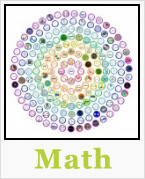



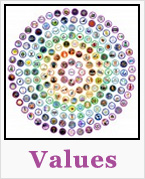
OPEN SOURCE CURRICULUM OUTLINES (click image for summaries and links to complete pages)
CARE
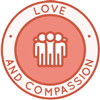
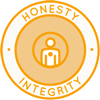
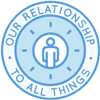
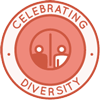
SHARE
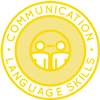
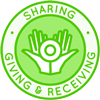
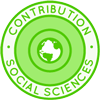
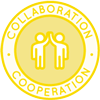
PLAY
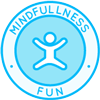
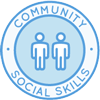
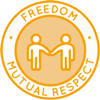
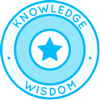
OPEN SOURCE TEACHING METHODOLOGY SUMMARIES
Montessori | Waldorf | Orff | Reggio | Multi-Intelligence | Bloom's Taxonomy | Study Tech | I-WE
INDEX OF ALL THE ONE COMMUNITY OPEN SOURCE LESSON PLANS

Click this image for the Lesson Plans for Life page with links to the rest of the lesson plans
THE WORLD'S LARGEST ONLINE FREE EDUCATION RESOURCE ARCHIVE
RELATED CONTENT AND OTHER RELATED RESOURCES
We're building this resource section. Click here if you have a suggestion or resource for this page.
























 One Community
One Community



